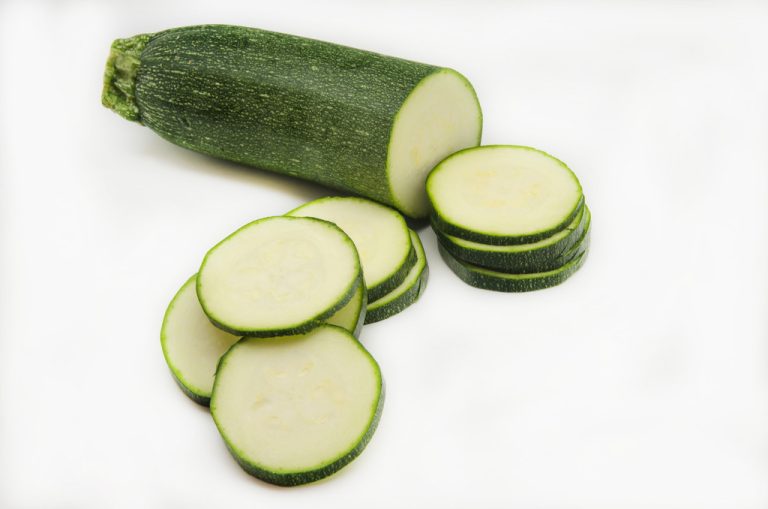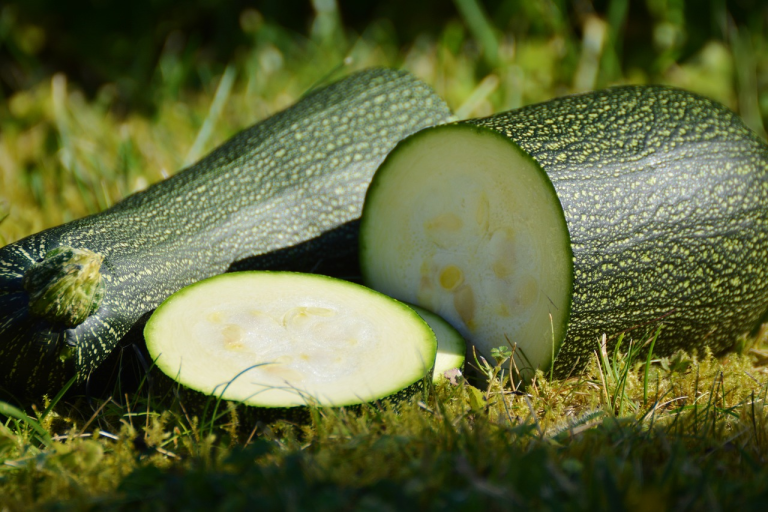Eating zucchini raw is actually very healthy. But is it true that raw zucchini can be poisonous? Here you can find out everything you need to know.

Eating zucchini raw: these are the advantages
Basically, there is nothing wrong with eating zucchini raw, quite the opposite: zucchini eaten raw is considered to be particularly healthy. It contains iron, a lot of vitamin C and vitamin A – if it is heated, many nutrients and vitamins are lost.
Zucchini should also not be peeled, as the peel contains most of the vitamins. If you wash the shell thoroughly, you can eat it without hesitation.
Due to their high water content, zucchinis are also filling and have comparatively few calories. But what about the rumor that you can’t eat zucchini raw?
When not to eat zucchini raw?
The problem with zucchinis are bitter substances called cucurbitacins:
Like other cucurbits, zucchini naturally contains cucurbitacins. In large quantities, these bitter substances can lead to digestive problems or even food poisoning.
Commercially available zucchini are special breeds that do not contain cucurbitacins. You can eat these without hesitation.
Be careful with homegrown zucchini. In your own garden, under certain circumstances, backcrosses can form, which again contain cucurbitacins.
Cucurbitacins are heat resistant and poorly soluble in water. Therefore, they are also preserved during cooking.
You can recognize an inedible zucchini by its strongly bitter taste.
Store-bought zucchini can always be eaten raw. If you grow your own zucchini, do a taste test first. Bitter-tasting zucchini contain poisonous cucurbitacins and should not be eaten raw or cooked.
Not just with raw zucchini: be careful with these fruits too
Legumes like beans and chickpeas contain phasin. This is a protein that is absorbed into the blood via the intestines and, in high doses, can cause the red blood cells to stick together. It can also cause indigestion and vomiting. Boil chickpeas for at least 15 minutes, then the phasin will become harmless.
Raw potatoes that have sprouted or green spots may contain solanine. This alkaloid causes various symptoms of intoxication in high doses. However, if you remove the affected areas of the potato, you can cook and eat it as usual.
Eggplants also naturally contain solanine. Due to targeted breeding, dangerous amounts are rarely contained here, but to be on the safe side you should only eat ripe, dark purple fruits.
Rhubarb is one of the plants that contains a particularly large amount of oxalic acid. In addition to other symptoms of poisoning, this can promote the development of kidney and bladder stones. The leaves of the rhubarb contain the most oxalic acid, you should definitely not eat them. The sticks lose the toxic substance when cooked.
Elderberries contain the toxin sambunigrin, which releases hydrocyanic acid and can cause abdominal pain, nausea and vomiting. Again, you should only eat ripe fruit that has had the stems, leaves, and seeds removed. The fruits of the elder are only harmless after they have been boiled for at least 20 minutes.
Overall, few types of fruit and vegetables are inherently poisonous. For many, however, it depends on the right maturity and preparation.







